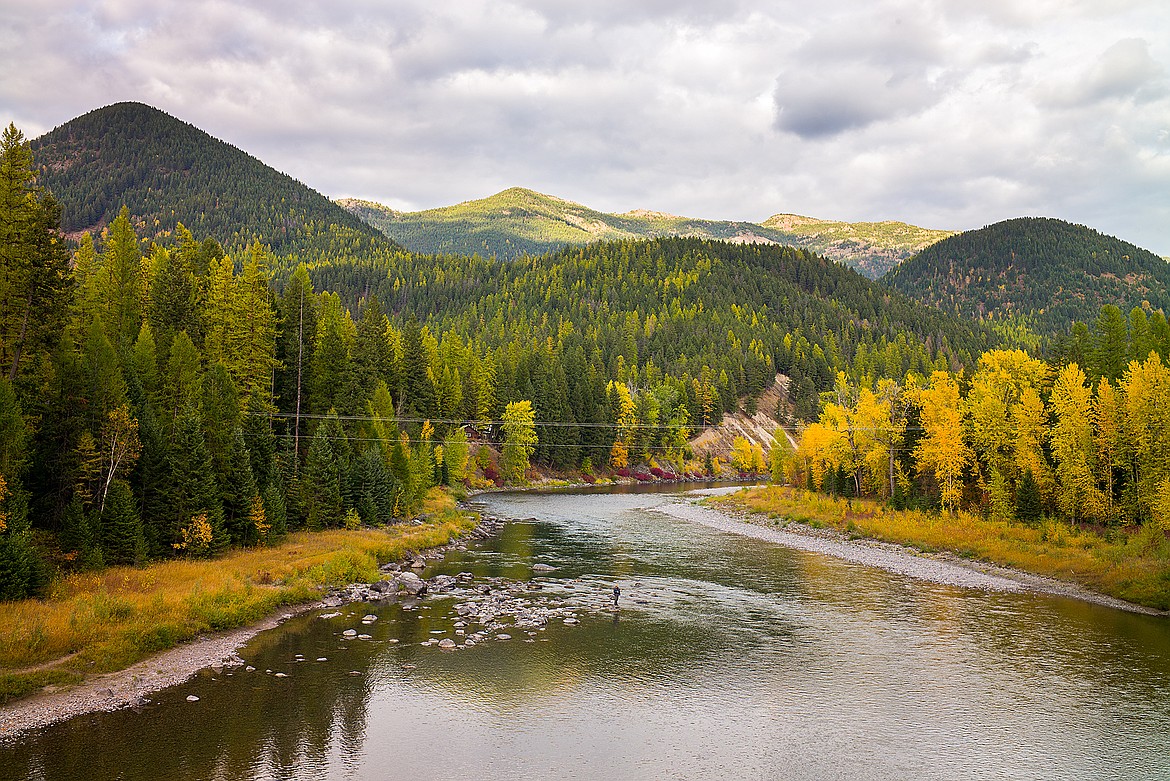Preserving Flathead River might someday require permit system
One older man who described himself as a fisherman said he first floated the North Fork in 1956. He shook his head.
“The task in front of you is insurmountable,” he said.
The U.S. Forest Service had asked for river tales and it snagged a few.
The stories were shared during a Wednesday night meeting in Kalispell focused on how to preserve for future generations certain characteristics of a total of 219 miles of the North Fork, Middle Fork and South Fork of the Flathead River.
In 1976 these qualities yielded inclusion of specific stretches of the Flathead’s three forks in the nation’s inventory of Wild and Scenic Rivers.
Personal accounts offered Wednesday described the sort of magical moments that could lead to sections of the river being loved to death, especially as visitation to Glacier National Park continues to rise.
There was tentative discussion at the meeting about the potential for requiring permits someday for private parties to float certain stretches of the river, or of adopting a lottery system for river trips akin to what manages use of the Smith River, a tributary to the Missouri River in central Montana.
One woman’s river story described getting married this summer along the North Fork during a break in a float trip from the border access point to Polebridge. She said an osprey circled overhead during the exchange of vows.
A man described separate floats on the North Fork during which his private group spotted a newborn moose on one occasion and two grizzlies on another.
About 70 people attended the meeting, which was organized by the Flathead National Forest and National Park Service staff from Glacier National Park and included a presentation by the University of Montana.
It was the sixth and final meeting held to help agencies prepare a Comprehensive River Management Plan for the stretches of river designated wild and scenic. The meetings began in May.
Wednesday’s meeting focused on recreation and scenery and the sorts of “outstandingly remarkable values” of the designated stretches of river that might be at risk as recreational usage of the river increases and onshore development proceeds.
The reaches of the Flathead River that are part of the National Wild and Scenic Rivers System include: the North Fork, from the Canadian border downstream to the confluence with the Middle Fork; the Middle Fork, from its headwaters to the confluence with the South Fork; and, the South Fork, from its origins to the Hungry Horse Reservoir.
The Wild and Scenic Rivers Act became law 50 years ago. It notes that certain rivers in the U.S. “possess outstandingly remarkable scenic, recreational, geologic, fish and wildlife, historic, cultural or other similar values” and shall be preserved as free-flowing rivers.
Previous meetings designed to solicit public input for the plan focused on water quality, wildlife, cultural and ethnographic values, fisheries and geology/botany.
Presentations Wednesday described a general trend toward increased use of the river, especially by private parties as opposed to commercial outfitters, whose numbers are capped.
An exception was portions of the South Fork that flow through wilderness and require planning to access. Usage there is mostly flat, said Tad Wehunt of Flathead National Forest.
Surveys of river users conducted between 2012 and 2014 found that people returning for recreation noted increased use, but still overwhelmingly reported still having a positive experience.
At the time, most respondents opposed creation of a permit system or charging user fees.
There was discussion about how to best monitor river use and to quantify changes in scenic values.
Monica Jungster, who grew up in Apgar, and her husband, Chuck Brasen, talked at the table they shared with Paul Austin, chief ranger at Glacier National Park, and others about the potential use of volunteers to track river usage.
Jungster owns Montana House, an Apgar Village arts and crafts shop established by her parents. She recalled floating down McDonald Creek as a girl in an inner tube.
As the meeting closed, Forest Service and Park Service officials on hand heard from people who said they believed some sort of permit or lottery system might someday be necessary on the portions of the three forks included in the Wild and Scenic Rivers inventory.
Work on the plan is expected to be complete in 2020.
Reporter Duncan Adams may be reached at dadams@dailyinterlake.com or 758-4407.

